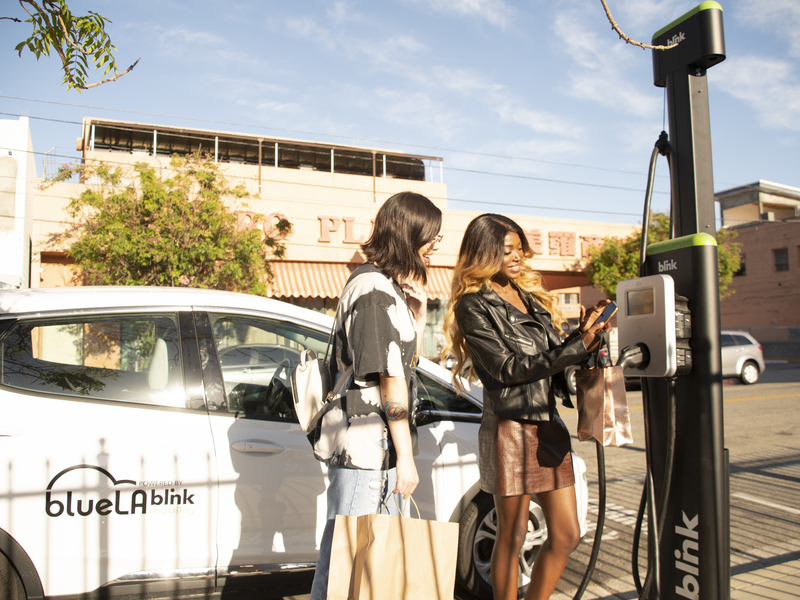What’s on the Horizon for Electric School Buses?
As an all-electric car sharing service, Blink Mobility’s members not only get the ease of renting electric vehicles and returning them to any of our convenient 40 L.A. locations. But, they also receive the health benefits of not being in or around a car that releases particulate matter into the air. Far too many forms of transportation still pollute, including those that carry children to school.
Electric school buses have become a hot commodity for school districts and parents in recent years. Environmentalists and concerned parents have been pushing to change gas-fueled buses to all-electric fleets. With the goal of benefiting the planet and the health of school children.
Why is This a Health Concern?
According to Forbes, nearly half a million school buses transport 20 million kids 3.4 billion miles a year on school buses. Which potentially exposes young students to pollution both inside and outside of the vehicle. Studies have shown that exhaust, from the engine crankcase and tailpipe of the bus, stays inside the vehicle, a process called “self-pollution.” This self-pollution can cause serious illness, such as asthma and allergies in kids. And has also been known to impede brain development in small children.
A study by Science Direct in the Economics of Education Review discussed this further. It showed that switching to electric buses had a positive influence on children’s respiratory health, and even their grades. Students showed “significant test score gains in English and smaller gains in math” when diesel fueled buses are swapped for electric. Perhaps there is nowhere EVs are needed more than school buses. Where undeveloped bodies and minds are easily affected by pollutants, and the users are too young to choose for themselves.
Are Electric School Buses a Smart Choice?
In a practical sense, school buses are ideal vehicles to be electrified. School buses make great electric fleets and their health benefits for children are undeniable. They are parked overnight, and usually at rest from early evening until the next morning. Which allows for plenty of overnight charging time. School buses don’t travel long distances, even the longest and most rural routes for school buses are local. Meaning buses would not necessarily have to recharge during the day because they do not require an extensive mile range.
Some states and school districts have already got involved in the process of changing their school bus fleets from gasoline to electric, but others are on the fence. The biggest barrier for some has been cost. But, parents in low-income districts have been advocating to local governments to provide the buses that support clean transportation. Specially, in neighborhoods that already are exposed to greater levels of pollution.
However, recent developments like the Infrastructure Investment and Jobs Act (IIJA) have opened a solution to the cost barrier. With the main goal of accelerating the electrification of America’s transportation industry, including school buses. The Biden administration committed $5 billion to the production of environmentally cleaner school buses. Half of these funds have been dedicated specifically for electric school buses. Additionally, the EPA will now award school districts $500 million through their Clean School Bus (CBS) rebates. Additionally, under IIJA, electric school bus chargers are an eligible expense. It’s the time for communities to access the EPA funds and commit to giving children a clean transportation system.
The Country’s Stand on EV Buses in 2022
As of the end of the school year, June 2022, U.S. school districts and fleet operators have committed to 12,275 buses in 38 states including Mississippi and Montana. California still leads the pack with more than 1,000 buses committed this year, and Maryland follows with 337.
One of the reasons for the bump is that Midwest Transit Equipment and commercial EV maker SEA Electric have partnered to provide 10,000 electric school buses. 5% are currently ready to be driven. According to the World Resources Institute, “the average amount of time that passes between the awarding of funds to the delivery of the electric school bus is around 16 months.”
Additionally, the VW settlement has funded 26 out of 38 states to buy more electric school buses. To continue the move forward, local and state government will need to commit more resources to EV school buses and students’ health.
Blink Mobility is proud to power L.A. with electric vehicles. Need to get to work, a doctor’s appointment, a meeting, a movie, and more? Rent a vehicle from our all-electric fleet and get where you’re going with no tailpipe emissions for a healthier you.
Recommend for You
Stay Informed
Join our mailing list for hot news and company updates.







